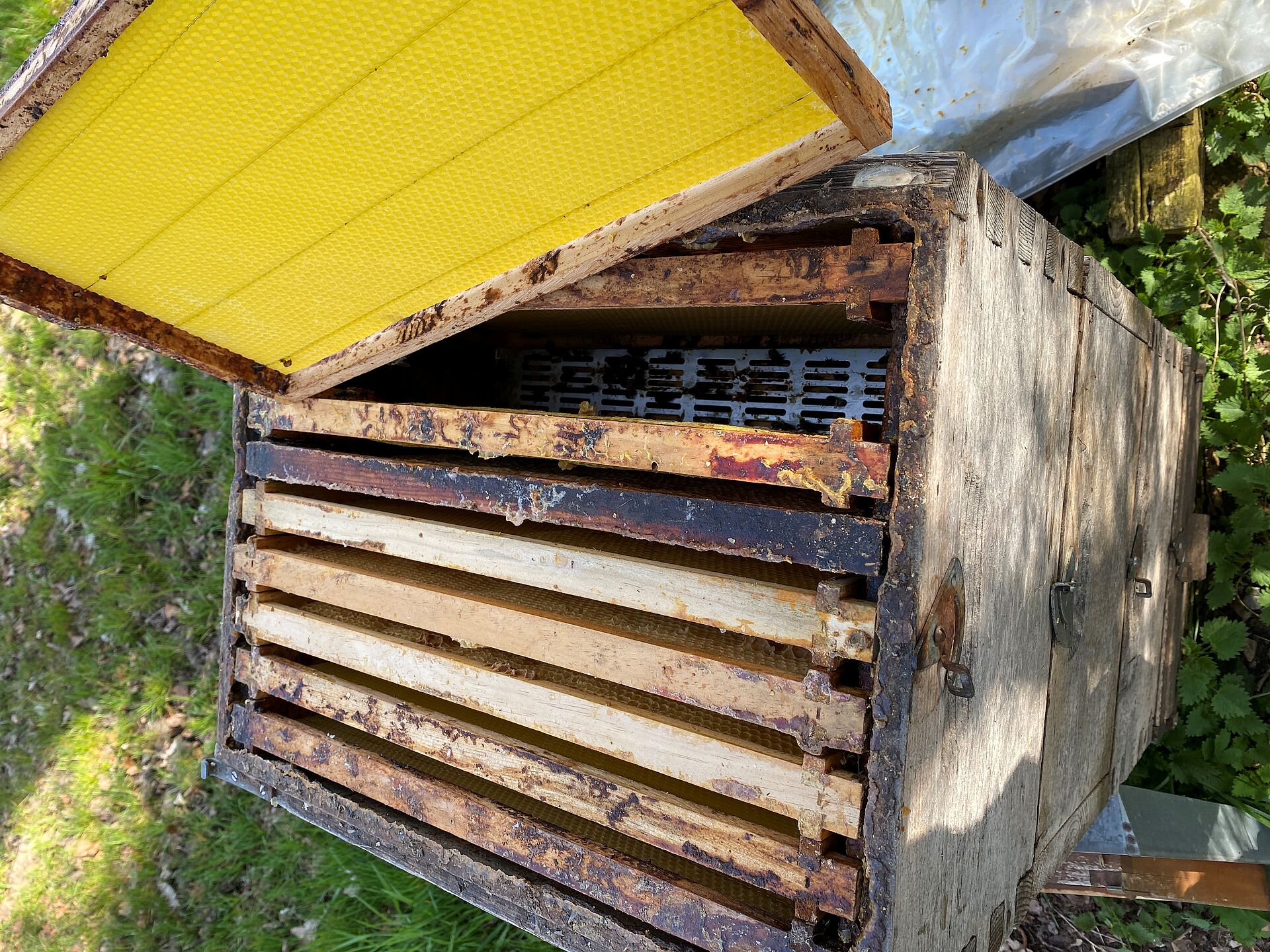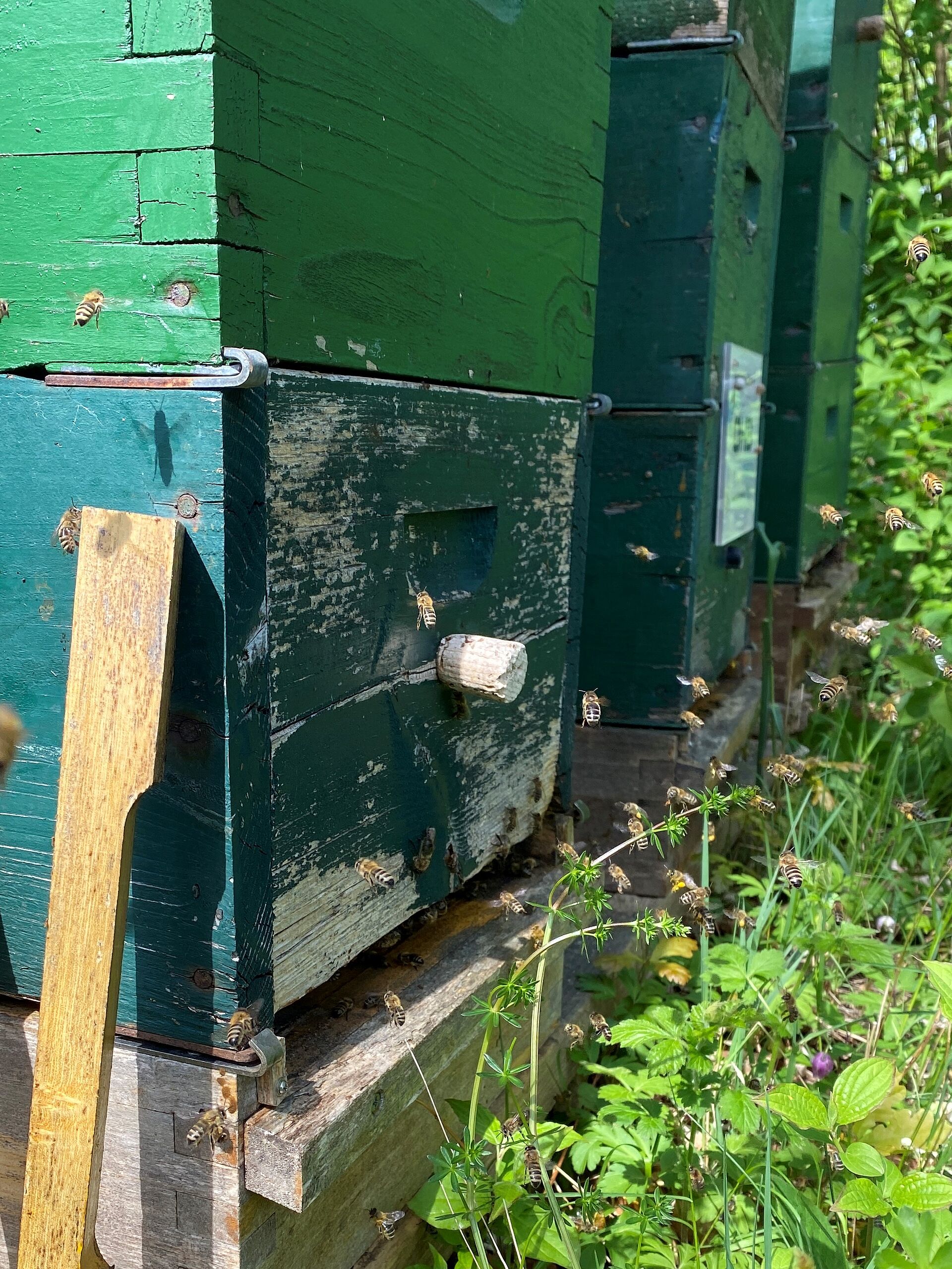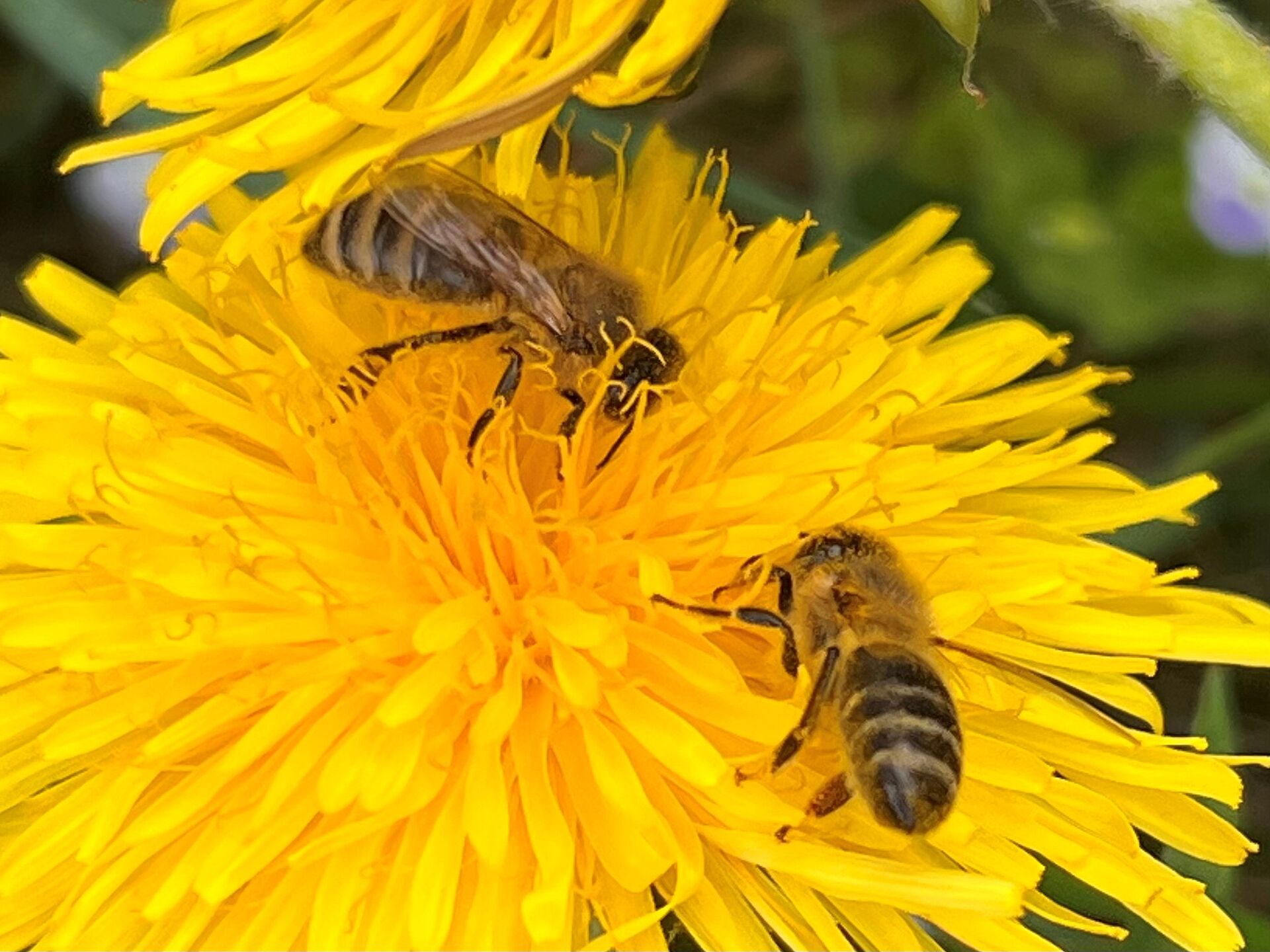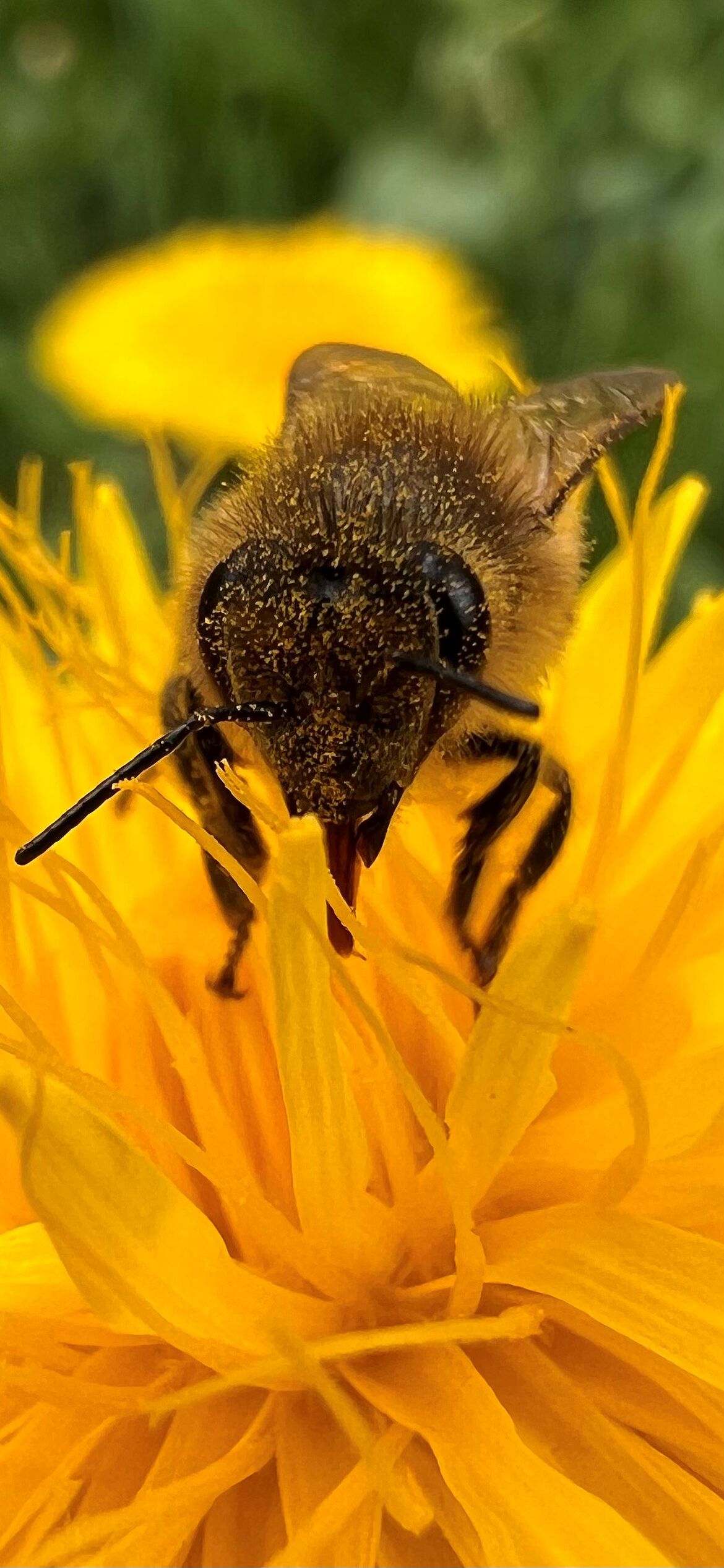Newsletter may:
Life punishes those who arrive too late
Dear bee friends,
For a long time, spring was a bit too cool here in Bavaria this year. Everything went all the faster when the fruit trees and dandelions blossomed. By the end of April we had almost summer-like temperatures. My strongest colony of bees brought in around 15 kg of nectar into the previously installed honey chamber this week, while other colonies still had to look after their offspring and consumed everything themselves.
The beekeeper has his hands full during this time. Young combs or middle walls are needed for the honey chambers. In my method of operation, the honey chamber is placed on two brood chambers using the Zander comb measure. To ensure that it is always clear where the queen is and that she does not lay any eggs in the combs intended for the honey, I use a so-called barrier grid. This keeps the slightly larger queen in the brood chambers while the workers can fit through the slits and store the honey as far away from the entrance hole as possible.
An empty frame for the drone brood is now placed in the brood chambers at the latest. The frame is also called a building frame, as it gives the bees the opportunity to build combs. If you leave it empty, the bees will mainly build drone combs for the male bees in spring. Actually too many drones, of which only a few are needed in May for mating the young queens.
In April, at the beginning of the cherry blossom, was also the right time to open the flight holes further.
The healthy bee colonies are now strong enough to protect themselves from most enemies. If there is enough food available, the queen now lays over 2000 eggs per day. However, this also depends on the queen's genes. Some are rather hesitant and do not take any risks in order not to starve to death during a cold snap, while others build a large brood nest as early as possible in order to be able to bring in the first nectar crop when the weather is favorable. The Carnica breed tends to be a representative of the former category, while the Buckfast queens are usually preferred by professional beekeepers due to their higher honey yield. At the end of the harvest, these beekeepers usually move their colonies to another location with a new supply of nectar.
Carnica bees are widespread here. This means that the neighboring drones that mate with my queens are mostly Carnica drones with these characteristics. As they are well adapted to our changeable weather, I'm sticking with them for now, despite the lower honey yield.
But now back to the dandelion, which fades far too quickly. Alongside rapeseed, this is an important source of nectar and pollen in Bavaria. As you can see in the photo, there is no dispute between the bees over nectar if there is enough for everyone. I therefore cannot understand the frequent discussions about competition between wild bees and honey bees!




